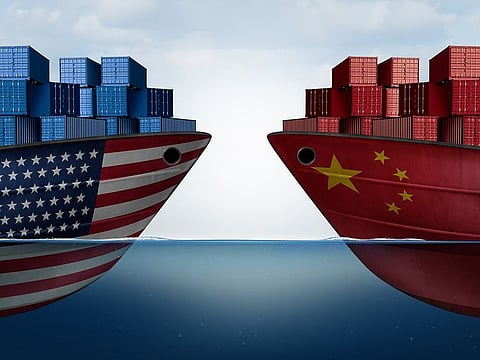In US-China trade disputes, no sector seems immune
China steel gets hit by higher import duty - and this is not the exception

The intense competition between the powers of the West and East is intensifying, expanding into even more new sectors such as electric vehicles. The rivalry now extends to the critical metals category, essential for today’s high-tech industries in electronics, electric batteries, and renewable energy.
This contest over mineral resources is significant because the majority of the natural reserves are located in emerging and developing nations, even as demand soars globally. The consuming countries – and these are mostly developed economies - are engaged in fierce competition to get access to these minerals, utilizing every tool available — from political pressure to financial incentives. This explains many of the current transnational disputes, particularly the major powers' tussle for control over African mineral resources.
US import duty hikes on steel
The US-China conflict stands as a prominent example of this global competition, with implications reaching far beyond their borders. The Chinese Secretary of State said: “The choice between cooperation and confrontation will profoundly impact the well-being of both nations and the future of humanity.” This comment objectively captures the essence of the conflict between the two superpowers.
Despite efforts to ease tensions, including frequent diplomatic visits such as the one by US Secretary of State Antony Blinken to Beijing—where he urged responsible management of differences—the trajectory appears to be heading towards confrontation. This situation is exemplified by President Joe Biden's proposal to implement a 25 per cent tariff on US imports of Chinese metals, steel, and aluminium, which adds to the those imposed by his predecessor, Donald Trump, in 2018.
In this respect, the confrontation extends beyond the US and China, and encompassing broader global dynamics between East and West. In April, the US implemented a ban on the import of certain Russian metals, such as aluminium and copper, while allowing exceptions for metals critical to its nuclear plants. Additionally, the US imposed new sanctions on ports that handle Iranian and Russian oil, primarily targeting those in China and India.
Despite US imports of Chinese aluminium products totaling only $1.7 billion in 2023, these actions signify the complex, multi-directional nature of the today’s global flashpoints. This escalation is evident as Washington recently initiated an investigation into the Chinese shipbuilding industry, signaling that the conflict could soon impact more sectors.
This was underscored by US Treasury Secretary Janet Yellen during her recent visit to China, where she stated that ‘all options for confronting Beijing are on the table’, and emphasized the need to address Chinese overproduction.
Who’s winning this ‘war’?
As the East capitalizes on their abundant mineral resources and cost-effective production driven by affordable labour and energy, the West wields significant influence through its powerful financial institutions and industrial behemoths. These Western entities, having heavily invested in China over past decades, now leverage their extensive networks to impact growth in emerging economies, and particularly that of their main competitor, China.
Several of these companies have initiated substantial reductions in their Chinese operations. HSBC and Morgan Stanley announced major job cuts in China, while Fidelity International reduced its workforce there by 16 per cent.
The influence of these Western pressure tactics could potentially surpass the effects of stringent protectionist measures imposed by these governments. While China and other emerging markets can likely find alternative markets due to the persistent global demand for commodities, the West faces the prospect of mineral shortages and rising prices in international markets.
This dynamic signals the onset of a new era of geopolitical conflict that could shape the global landscape…
Sign up for the Daily Briefing
Get the latest news and updates straight to your inbox



_US_GOVERNMENT_SHUTDOWN_resources1_16a08546ce2_large.jpg?w=320&auto=format%2Ccompress&fit=max)
